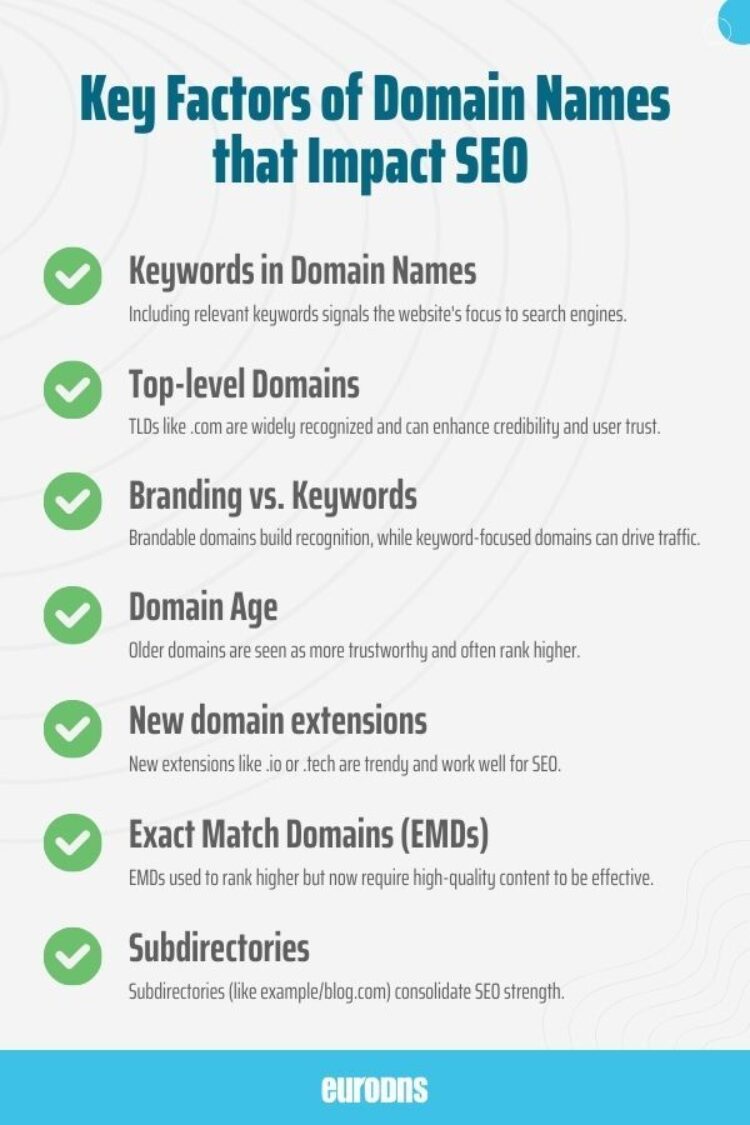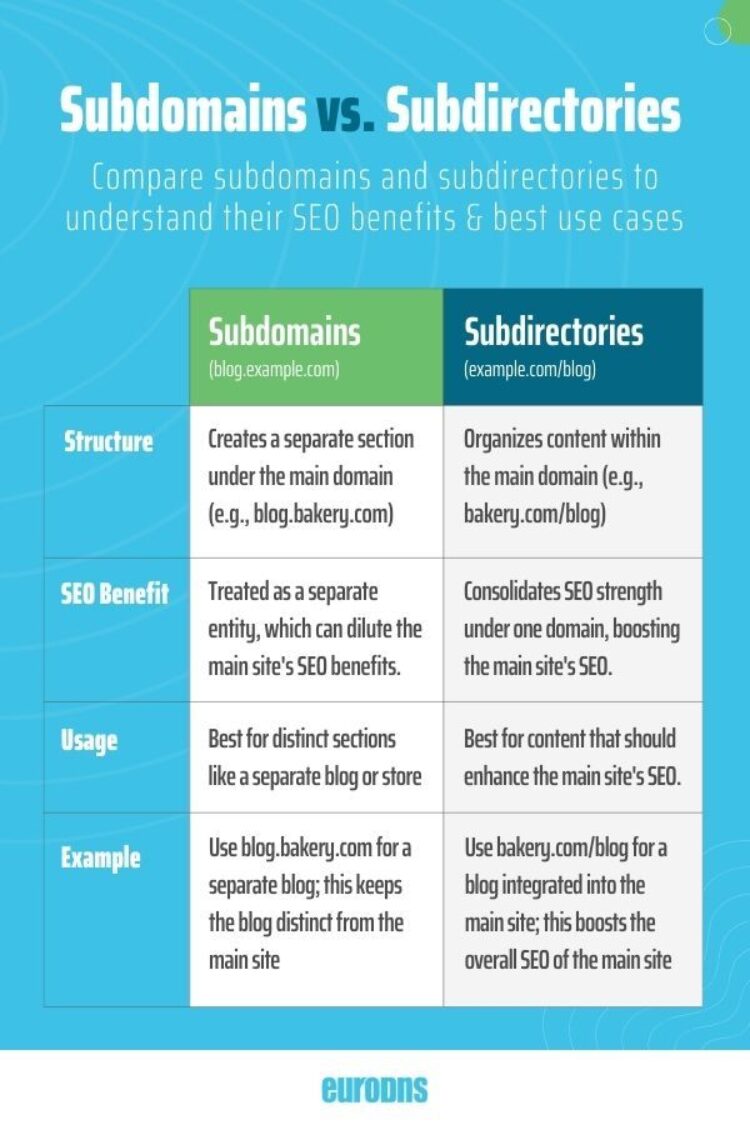SEO and Domain Names: Increase your Search Ranking with SEO-friendly Domain Name

Imagine your website is a shiny new store in a busy mall. What's the first thing people notice? Your store’s name, right? That’s your domain name on the internet! And when you mix a catchy domain name with some smart SEO, it's like having a big, flashy sign that helps you stand out in search results.
Basics of SEO and Domain Names
So, what exactly is a domain name? Your domain name is your digital address. It's how people find you in the vast world of the internet. Every domain name has two main parts:
1. Second-Level Domain (SLD): This is your unique name, like “example” in “www.example.com.” It's your chance to showcase your brand or a relevant keyword.
2. Top-Level Domain (TLD): This is the ending, like .com, .net, or .org, known as the domain extension. There are over 1,000 TLDs, including fun ones like .dog or country-specific ones like .uk.
When you combine the SLD and the TLD, you get what's called a "root domain" (like example.com). It's the main address of your website.
How do domain names impact SEO? Well, search engines use the keywords in your domain name to help determine what your site is about. So, having a relevant and memorable domain name can help boost your visibility in search results.

How SEO and domain names work together?
There are quite a few elements that shape how SEO and domain names work together. Let’s unpack these factors and see how they can boost your site's visibility.
Keywords in Domain Names
Let's talk about why keywords in your domain name matter and how they can help:
Enhanced SEO: When you include relevant keywords in your domain name, it tells search engines exactly what your website is about. For example, “bestpizzalux.com” screams that you’re the go-to place for pizza in Luxembourg.
Targeted Visibility: These keywords make your site pop up more often in search results. It’s like having a big neon sign that says, “Hey, this is exactly what you’re searching for!”
Influence of Keyword-Rich Domain Names
1. Improved Rankings: Using keywords in your domain name can help you climb those search rankings.
2. User Attraction: A domain like “bestpizzalux.com” not only tells visitors you offer top-quality pizza in Luxembourg but also grabs the attention of people specifically looking for the best pizza in town.
3. Content Clarity: Keyword-rich domains give clear hints to both users and search engines about what your website is all about, helping you attract the right audience effortlessly.

Branding vs. Keywords: Balancing brand identity and SEO with domain names
When it comes to picking a domain name, you’ve got two main paths: Brandable or Keyword-focused.
Brandable Domain Names: Think of names like "Nike.com." These are all about creating a unique identity that sticks in people’s minds. They’re usually the company’s name or a cool twist on it, designed to build strong brand recognition over time.
Keyword-Focused Domain Names: On the flip side, names like "bestshoes.com" are chosen for their SEO perks. They include terms people often search for, driving more traffic to your site by telling search engines exactly what you offer.
Impact of Domain Extensions
1. What people think: Different domain extensions like .com, .net, and .org give different vibes. For instance, .com is like the popular kid in school - everyone knows and trusts it.
2. SEO effects: While .com is the most familiar, newer extensions like .io, .tech, and .blog are gaining wider acceptance and work just as well for search engines.
3. Matching your brand: Choosing the right extension can really highlight what your brand is about. If you’re into tech, .tech shows it off instantly. It’s like wearing a team jersey that proudly displays who you support.
Role of ccTLDs
Country Code Top-Level Domains (ccTLDs) like .us, .uk, and .ca act as hometown badges for websites, showing search engines where they're based. This is great for catching the eye of local shoppers. However, just like a hometown sign might not catch the attention of someone far away, using a ccTLD can sometimes limit how often your site appears in global searches.
Enhancing SEO with Domain Age
Older domain names can give your website a boost in search rankings. They've been around longer and often have more links from other websites, which makes them look more trustworthy. Sticking with the same domain name over time helps build this trust and makes your site seem more reliable to search engines.
The role of Exact Match Domains (EMDs) in SEO
Exact Match Domains used to be a big deal for SEO. They match exactly what people are searching for, like "bestshoes.com" for "best shoes." In the past, an EMD could boost your site's ranking. But now, search engines focus more on the quality of your content. So, while having an EMD can still be helpful, having great, relevant content on your website is even more important.
Choosing between Subdomains and Subdirectories
A subdomain is a separate section of your main domain (e.g., blog.bakery.com), while a subdirectory is a folder within your main domain (e.g., bakery.com/blog).
The table below outlines the key differences, SEO benefits, and best use cases for each.

Best practices for selecting an SEO-friendly domain name
To learn more about how to pick a memorable, keyword-friendly name that enhances your site's visibility, check out our tips on SEO-friendly domain names here
Steps to Change Your Domain Name
Changing your domain name can shake up your SEO, but with a little planning, you can keep things running smoothly. Here’s how to make the transition easy:
1. Set up 301 Redirects: Redirect traffic from your old domain to the new one using 301 redirects. This tells search engines your site has moved for good and helps keep your search rankings intact by transferring the SEO elements from your old domain to the new one.
2. Verify the new domain with Google Search Console: After setting up the redirects, verify your new domain in Google Search Console. This helps Google spot and index your new domain faster. Don’t forget to submit a new sitemap to make sure all your pages get indexed properly.
3. Update all backlinks: Refresh all backlinks pointing to your old domain. Reach out to the webmasters of the sites linking to you and ask them to update their links to your new domain. This keeps your site’s authority strong and ensures visitors land in the right place.
Real-World Examples
Let's look at how some big players have nailed their domain names for SEO success:
- Amazon: Amazon.com uses a brand-focused domain name that’s easy to remember, boosting its search rankings and making it a go-to site for millions.
- TripAdvisor: TripAdvisor.com mixes branding with keywords, making it clear it offers travel advice, which helps attract users and improve SEO.

Futuretrends in Domain Names and SEO
Emerging trends in domain naming tradition are shaping the future of SEO.
1. Innovative TLDs on the rise: New TLDs like .tech, .blog, .shop, and .app are becoming popular, providing businesses with unique, relevant domain names that enhance SEO.
2. Building trust through consistent branding: Search engines now favor domain names that align closely with a brand’s identity, improving user trust and boosting rankings.
3. Emergence of niche and localized TLDs: Businesses are increasingly using country code domains (ccTLDs) like .uk and .ca to target local markets more effectively and enhance regional visibility.
4. Tech and AI domains gain popularity: Domains such as .AI and .IO are becoming the go-to choices for tech and startup communities, reflecting a strong, tech-forward brand identity.
5. Creative and memorable domains: With traditional domains becoming saturated, businesses are turning to creative, AI-generated domain names to stand out and capture user attention.
Strategic Domain Name Planning
In the digital world, selecting a domain name means selecting a name that balances SEO with strong branding. Pick a domain extension that resonates with your audience, and keep your domain consistent over time, you're setting up your website for success!
